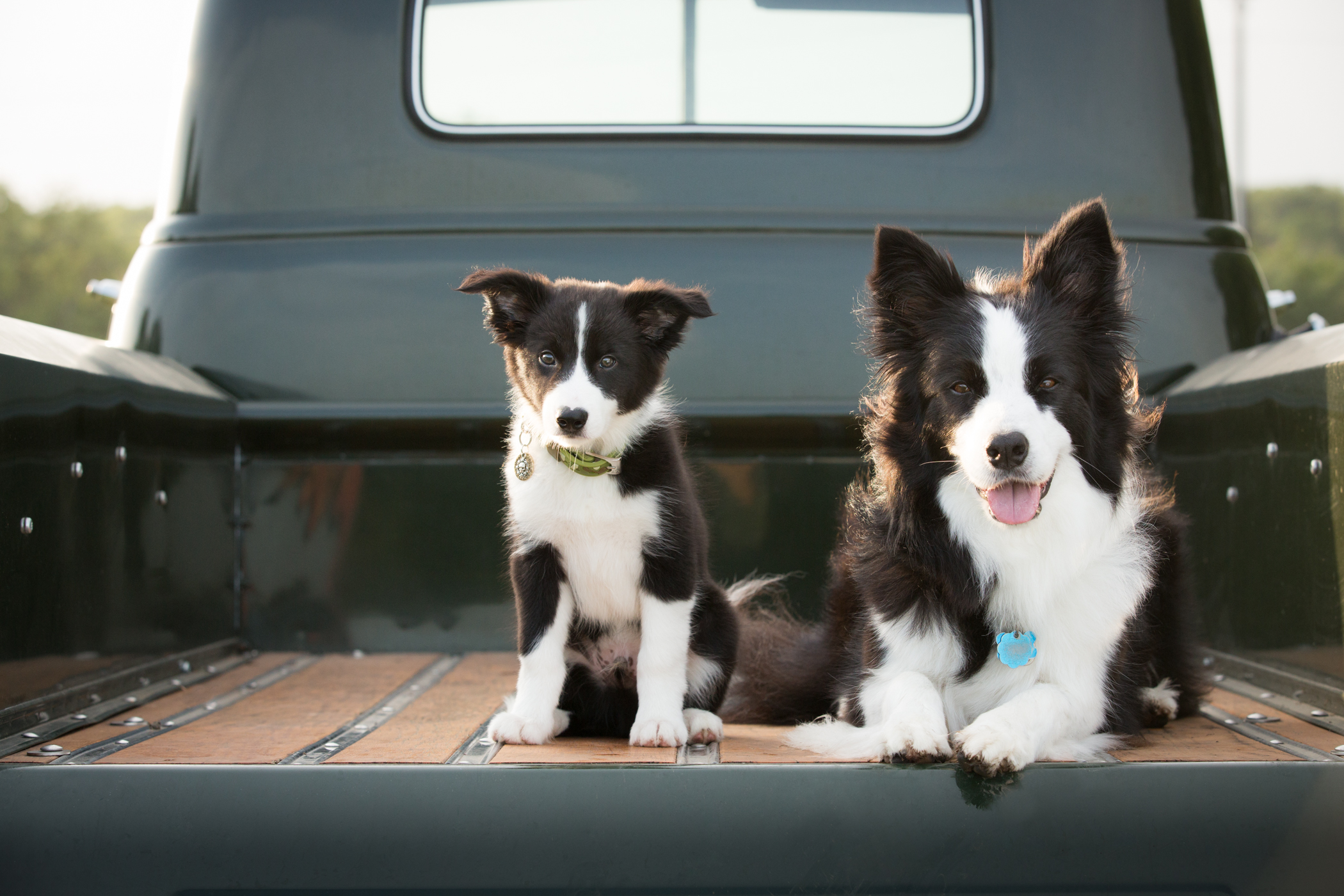Pet Photography: Understanding Dog Behavior October 25, 2016 – Posted in: Photography – Tags: dog photography help, how to take good dog pictures, norah levine, pet photography, pet photography tips, tips for photographing dogs
This post was excerpted from Pet Photography by Norah Levine.
Understanding the behavior of your furry friends leads to great photographs!
Consider that as photographers we approach dogs with a giant “eyeball” with equipment, bags and an agenda for them to “perform” according to our artistic vision. It’s important to understand their needs and learn to read their communication for this to work well.
Like humans, every dog has his or her own unique character, tendencies, likes and dislikes. Unlike humans, however, dogs always share with us how they feel. This communication can be large and loud or small and subtle. If you pay close attention and start to build knowledge the way dogs communicate, it will help you tremendously with your portraits and editing.
You don’t need to be a dog trainer in order to start building an awareness of their behavior that will help you with your portraits and I highly recommend that you start to build this awareness before you’re in the middle of a photo shoot.
A large portion of a dog’s communication occurs through body language.
Pay Attention to Body Language
A dog’s body language provides valuable information about his or her comfort level with you, the environment and situation overall. Our goal as pet photographers, is to allow the dogs to feel as comfortable as possible and as a result we’ll have a better opportunity for capturing the images we want and stay safe in the process. Note that the purpose of sharing some signs of stress that dogs typically display for the purpose of cultivating awareness, not to scare you.
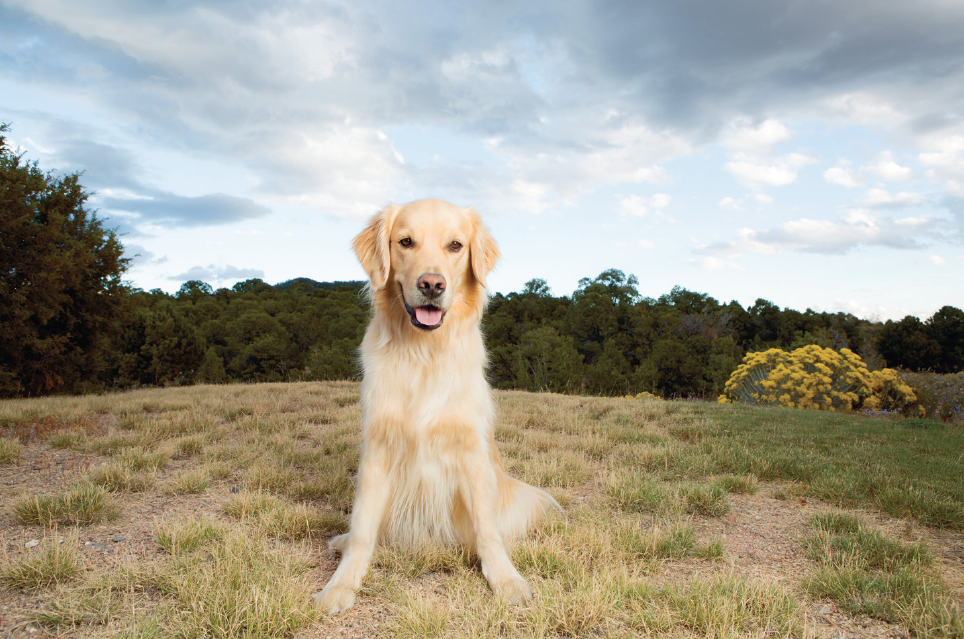
In this image the dog’s body language is relaxed. Just what we want!
When I am interacting with and photographing dogs, I am looking first at some of the major body language signals including their eyes, ears, tail, mouth (both physical gestures and verbal) and general body position.
I want a dog’s eyes to be soft and relaxed as they are often an indicator that the dog is at ease. Squinty eyes are typically considered “hard” eyes and will usually tell me that a dog is experiencing stress of some sort or possibly displaying signs of aggression. I never want to stare at a nervous or aggressive dog because this can actually indicate to the dog that I am being aggressive or contentious.
When I see a dog with its eyes wide open, even showing a lot of the whites of its eyes, it may indicate that the dog is concerned, stressed or at the very least, has a heightened state of awareness. Intense eyes on dogs can often happen when treats are introduced– this isn’t necessarily a reaction to bad stress, but this isn’t usually a good “look” for portraits.
Expressions can change from moment to moment and as I am photographing I can notice these changes from frame to frame. I may capture an image wherein a dog has soft, relaxed eyes and then in the next frame the eyes appear squinty and tense. These expressions as captured on my camera aren’t always indicators that a dog is stressed during the entire shoot, but if these expressions persist I pay close attention and make sure I respond appropriately by taking breaks, providing needed space or changing some action that may be causing the discomfort.
While you are focused on your own photographic goals, it’s important to remember that your camera, gear and actions can make some dogs very uncomfortable. (See the trouble shooting section of this chapter for ideas on how to navigate this situation).
It’s all About the Ears
A dog’s ears will also provide a lot of helpful information about his or her comfort level. Regardless of the type of ears on a dog, I typically want them both looking alert or relaxed for the images.
Some dogs have ears that are permanently upright like a German shepherd’s ears or a Chihuahua’s. In this case, physical shifts in their ears are subtler than, for example a Labrador retriever’s ears.
Dogs with ears that are permanently standing up still have the ability to move and this impacts the look of the portrait. For example, a Chihuahua’s ears are a bit like antenna and can move around subtly in response to sounds or action. My ideal positioning for dogs with these types of ears is when they both face straight forward.
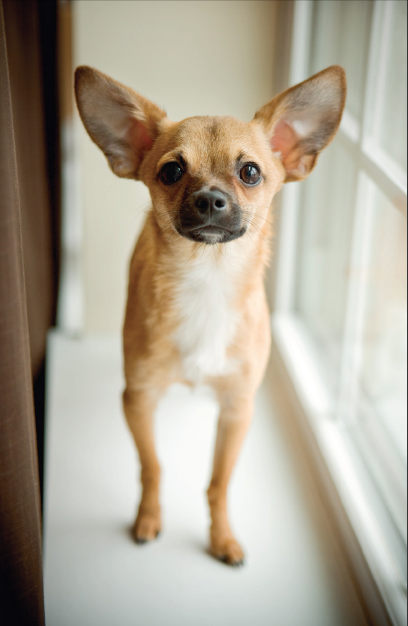
Phillip the Chihuahua has ears that always stand up so I’ll need to look at his eyes and other body language cues to get major information about how he is responding to the situation.
Floppy-eared dogs have a lot to “say” with their ears. What I’m usually aiming for with these types of dogs is that they’re either perked up or soft, loose and floppy. When a dog’s ears are pinned back close to their head, it usually tells me that the dog is stressed. My goal to have dogs’ ears perked up is because it seems to help their character show through and at the very least, they appear comfortable, curious, approachable and honestly, cuter.
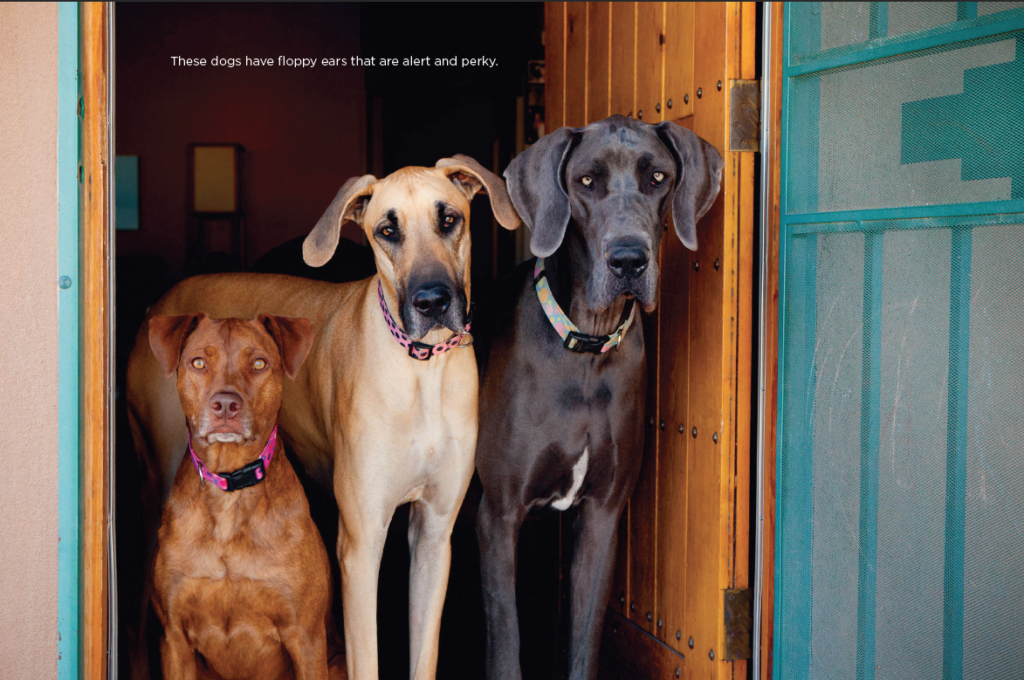
Tails Talk Too
Tail wags can tell us a lot about a dog’s reaction to a given situation. Tail wags are often a misunderstood dog behavior; not all wags indicate a content dog. My preference is the swooshing, swaying, fluid-moving wag as it’s usually telling me the dog is relaxed and enjoying herself or himself. While rapid tail wags may tell me that a dog is excited it can sometimes mean that the dog is unsure or nervous.
Dogs that don’t always have permanently curly tails will sometimes point their tail in a very stiff manner. This can show me that the dog may be alert and focused, or potentially stressed and or aggressive. Dogs with “straight” tails can also show signs of intensity and stress when they curl their tails. So much information is shared with just this one body part! I wonder what we’d be able to share about our emotional state as humans if we had tails…
Dogs provide a lot of information with their mouths about how they are reacting to their environment. When photographing, I’m keeping my eyes open for a soft jaw and mouth, maybe a little tongue sticking out or easy panting. Tense, clenched jaw muscles tell me that a dog isn’t comfortable.
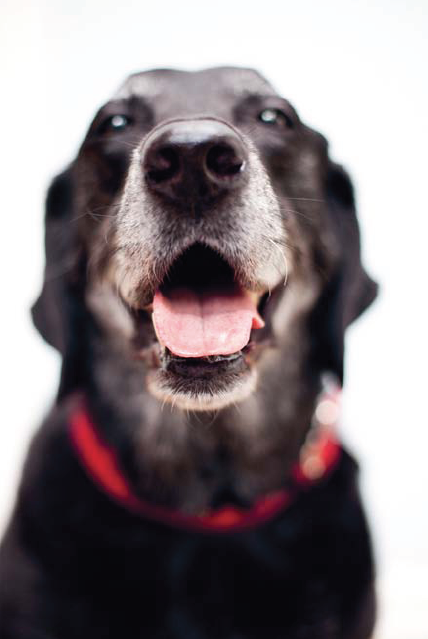
This dog is displaying a relaxed, open mouth with just a little bit of tongue showing.
Behold the Bark
Barking and other verbal sounds are a major way for dogs to communicate. When it comes to barking, I always try to take into consideration the intensity of the bark and the context. My dog Otis has several different versions of his bark: the type that seems to shout and grumble at me when I return from being away, the piercing bark he gives his sister Mika when he wants her to play with him and the deep, guttural bark he makes when he sees something scary or threatening. I’m sure if you have a dog in your life you know just how much variety there can be in their sounds. By paying attention to the distinction between what I’m hearing I’m able to gather valuable information.
When you photograph dogs you can gather lots of information from the sounds he or she may give you. Their bark can be a friendly greeting, an alert to the owner that someone new is present, an intense warning, an excited whine or anything in between. Paying close attention to these signals will help you during the photo shoot in terms of how to react and respond. In addition, having a strong communication with the pet parent about the dog’s temperament can be very helpful. Ultimately though, it is up to you as the photographer to read the signals and respond appropriately. For example, if someone comes over to my house and Otis is using his “grumbling” noises/bark I will be able to tell my visitor that he is talking to them and wants to play.
See the Big Picture
Lastly, looking at general body language and posture is hugely helpful in judging the comfort level of a dog, especially when you’ve taken into consideration the other major body signals. When a dog is leaning towards you with hard, intense looking eyes, it is a good idea to back away and give that dog some space because that dog is potentially showing some signs of aggression. Some larger breed dogs tend to be “leaners” and will lean into your legs as a friendly way to connect.
Hair standing on end, typically on the back and tail area and tight/tense muscles is a sure sign of intensity, extra excitement of some kind, and is often a result of fear or potential aggression. During my photo shoots, I want the dog to display loose, relaxed body language because I know I’ll get better photographs and the whole experience will be more enjoyable for everyone. None of my clients have ever wanted portraits of their dogs when they looked stressed out.
Of course there are always exceptions to these, but being aware of these major signals and expressions is good to have as a resource. Consider these signals and communication in context to the situation. For example, are there other dogs or animals in the location? Are they sick or old? Are you asking them to do something they’re not normally allowed to do (like get on the couch if they’re typically not allowed). Did you introduce something new like a toy, sound or movement they might be reacting to? Does your camera seem to scare them? Are the treats you are offering them getting the dog too excited? Context is very important.
Did you like this post? If so, be sure to check out Norah Levine’s newly released, Pet Photography: The Secrets to Creating Authentic Pet Portraits, available now!

